Have you ever stared into a fish tank and imagined it as a miniature alien world, buzzing with creatures so bizarre they seem to come from another planet? The truth is, our planet is packed with astonishing life forms that look more like movie monsters than household companions. These aren’t your typical goldfish or guppies—these are real-life oddities, each with its own story, personality, and scientific marvel. For those daring enough to care for the peculiar, there’s a universe of ethical, tank-dwelling pets just waiting to amaze and bewilder. Let’s take a deep dive into the realm of the most astonishing, alien-looking pets you can welcome into your home—and maybe even your heart.
Axolotl: The Smiling Salamander

With feathery gills sprouting like a crown and a constant, gentle smile, the axolotl looks like a cartoon come to life. Native to Mexico’s lake systems, this amphibian never grows up in the traditional sense—it remains in its aquatic, juvenile form throughout its life, a phenomenon called neoteny. Their skin can range from ghostly white to inky black, sometimes even a shimmering gold. Scientists are obsessed with axolotls because of their ability to regrow limbs and even parts of the brain. As pets, axolotls are hardy, relatively easy to care for, and will often follow your finger along the glass, curious about their human companions.
Bristlenose Pleco: The Bearded Bottom Feeder
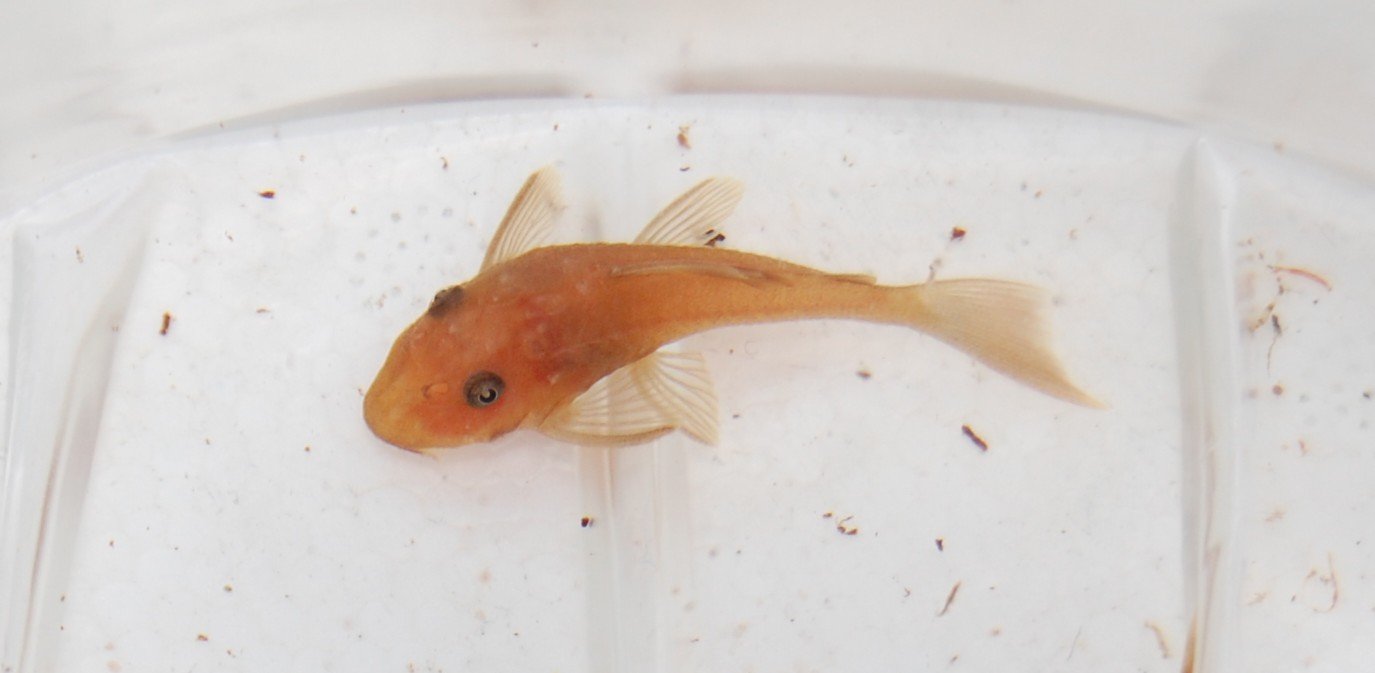
Imagine a fish that looks like it’s been adorned with a wild, spiky mustache. That’s the bristlenose pleco, a type of catfish famous for its tentacle-like facial appendages. These peaceful scavengers are masters at cleaning algae from tanks, making them both bizarre and useful. Bristlenose plecos come in various colors, from dark brown to yellow, and their “beards” grow more extravagant with age. Watching them glide along the tank walls, vacuuming up debris, feels like peering into a tiny, underwater cleaning crew straight out of a sci-fi film.
Vampire Crab: The Neon Nightcrawler
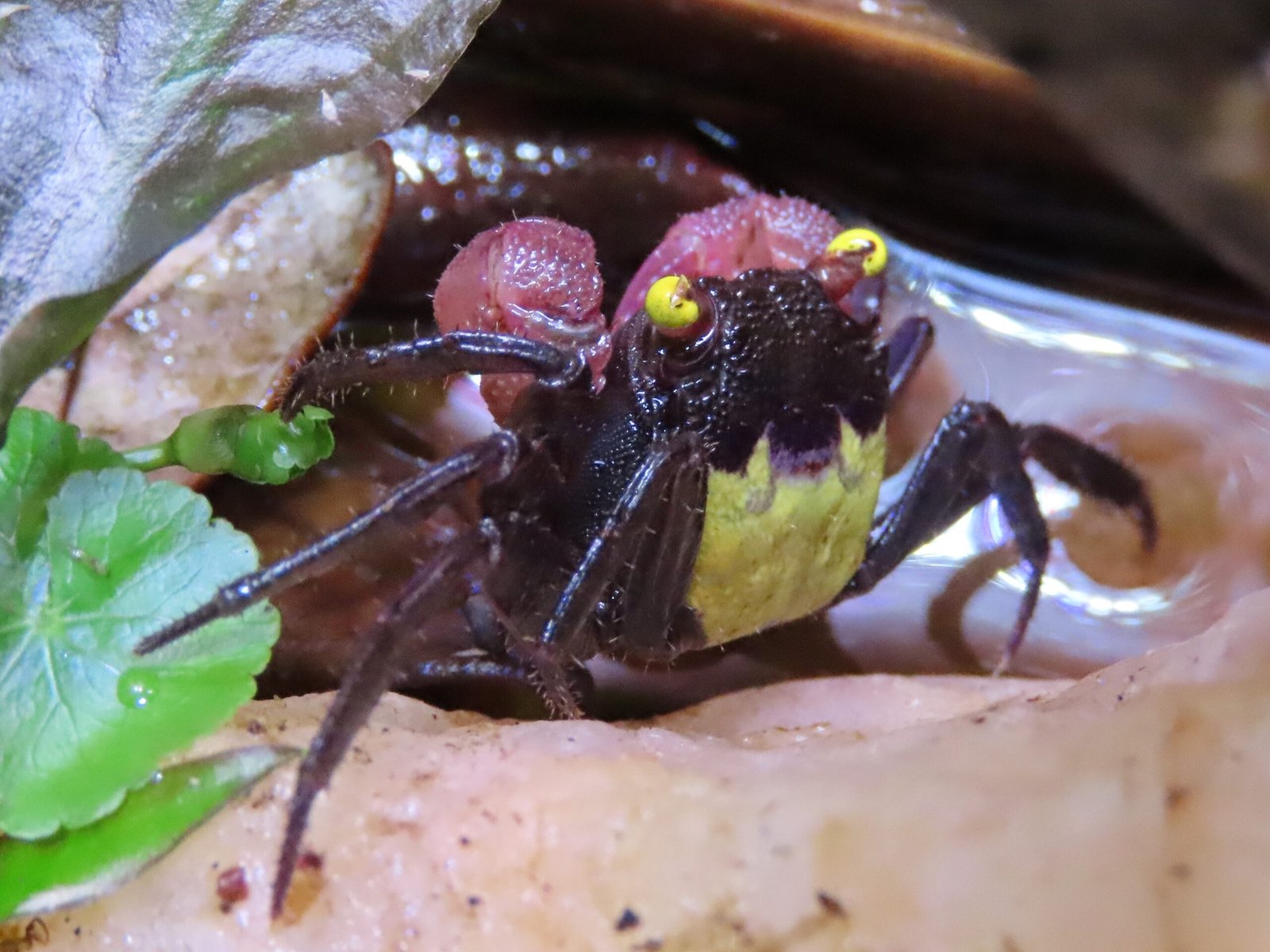
Don’t let the name scare you—vampire crabs are tiny, vibrant creatures with glowing yellow eyes and electric purple or orange claws. Unlike their intimidating title, these crabs are harmless and thrive in paludariums—tanks with both water and land elements. Their otherworldly appearance is matched only by their quirky behavior; they’ll climb, burrow, and even interact with each other in surprisingly social ways. Vampire crabs are perfect for those seeking a living, moving piece of neon art.
Peacock Mantis Shrimp: The Technicolor Boxer

If you want a pet that looks like it escaped from a cosmic reef, the peacock mantis shrimp is your champion. Bursting with every color in the rainbow, this crustacean sports eyes on stalks, club-like arms, and a fiercely curious personality. Scientists study their eyes for their ability to see polarized light and more colors than any other animal. But watch out: their “punch” can shatter glass, so they require a reinforced tank and careful handling. Every moment with a mantis shrimp is a lesson in the wild creativity of evolution.
Freshwater Jellyfish: The Gentle Drifters

Picture a floating, translucent UFO, pulsing quietly through the water. Freshwater jellyfish are mesmerizing, ghostly animals that drift gracefully and require minimal space. While their ethereal appearance might suggest danger, these jellies are harmless to humans and can be kept in specially designed tanks with gentle water flow. Watching them glide and pulse in the current is like observing a living lava lamp—soothing, hypnotic, and just a little bit surreal.
Leaf Insect: The Master of Disguise

For fans of the truly bizarre, the leaf insect blurs the line between animal and plant. With bodies perfectly mimicking a green leaf, complete with “veins” and “bites,” these insects can vanish in plain sight. Leaf insects are slow-moving, gentle, and thrive in terrariums with plenty of foliage. Their camouflage is so convincing that you might lose track of them entirely unless you look closely. It’s as if evolution played a prank and turned a common leaf into a tiny, walking creature.
Blue Dragon Sea Slug: The Sapphire Stunner
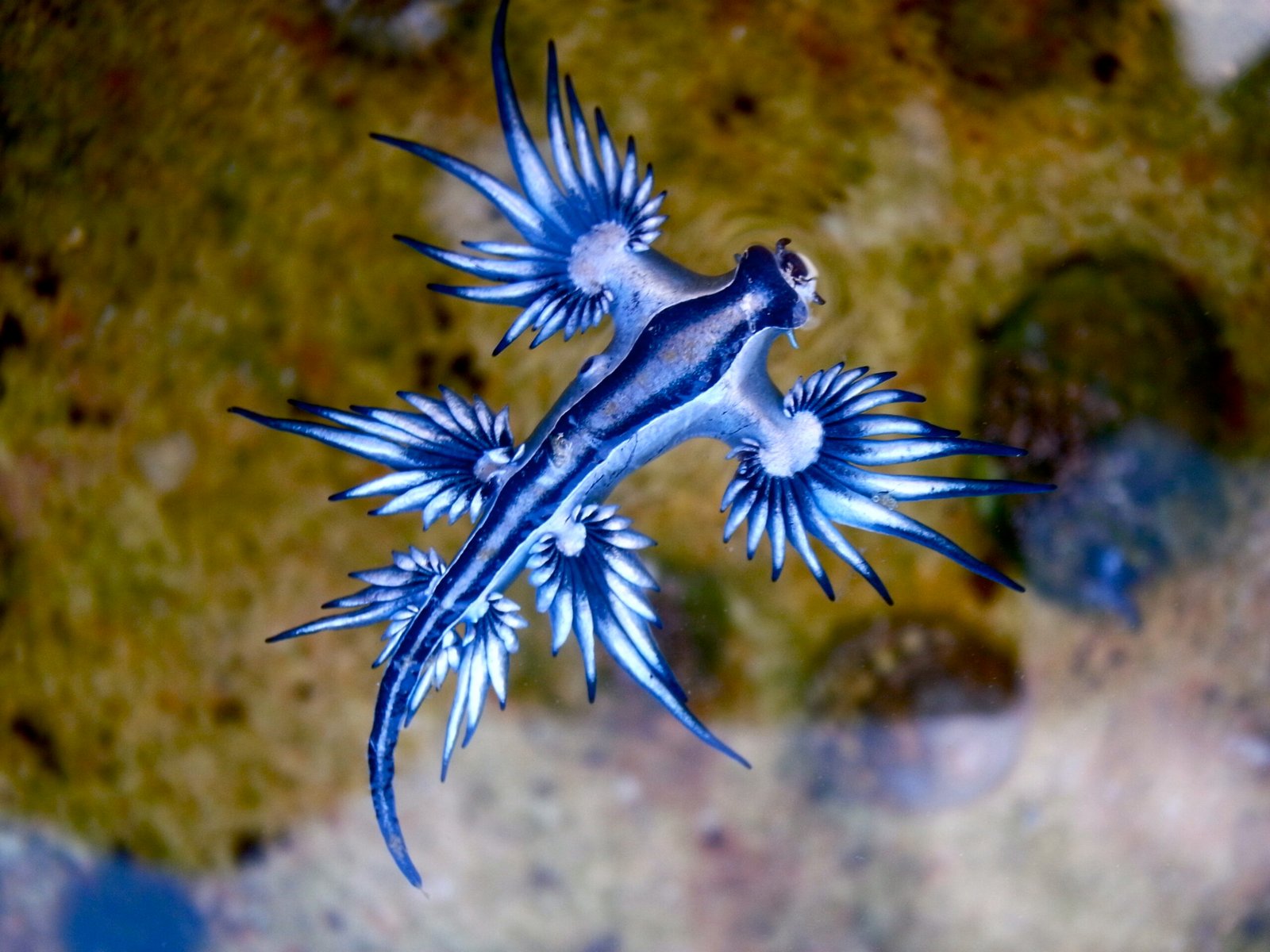
Few creatures look as magical as the blue dragon, a sea slug that floats upside down at the water’s surface. With shimmering blue and silver “wings,” this tiny mollusk can look like an alien spaceship. They are famous for feeding on toxic jellyfish and storing the poison in their own bodies, making them dangerous to touch but fascinating to observe in specialized saltwater tanks. Their rarity and delicate care needs make them a prize for advanced aquarists.
Ghost Shrimp: The Invisible Cleaners
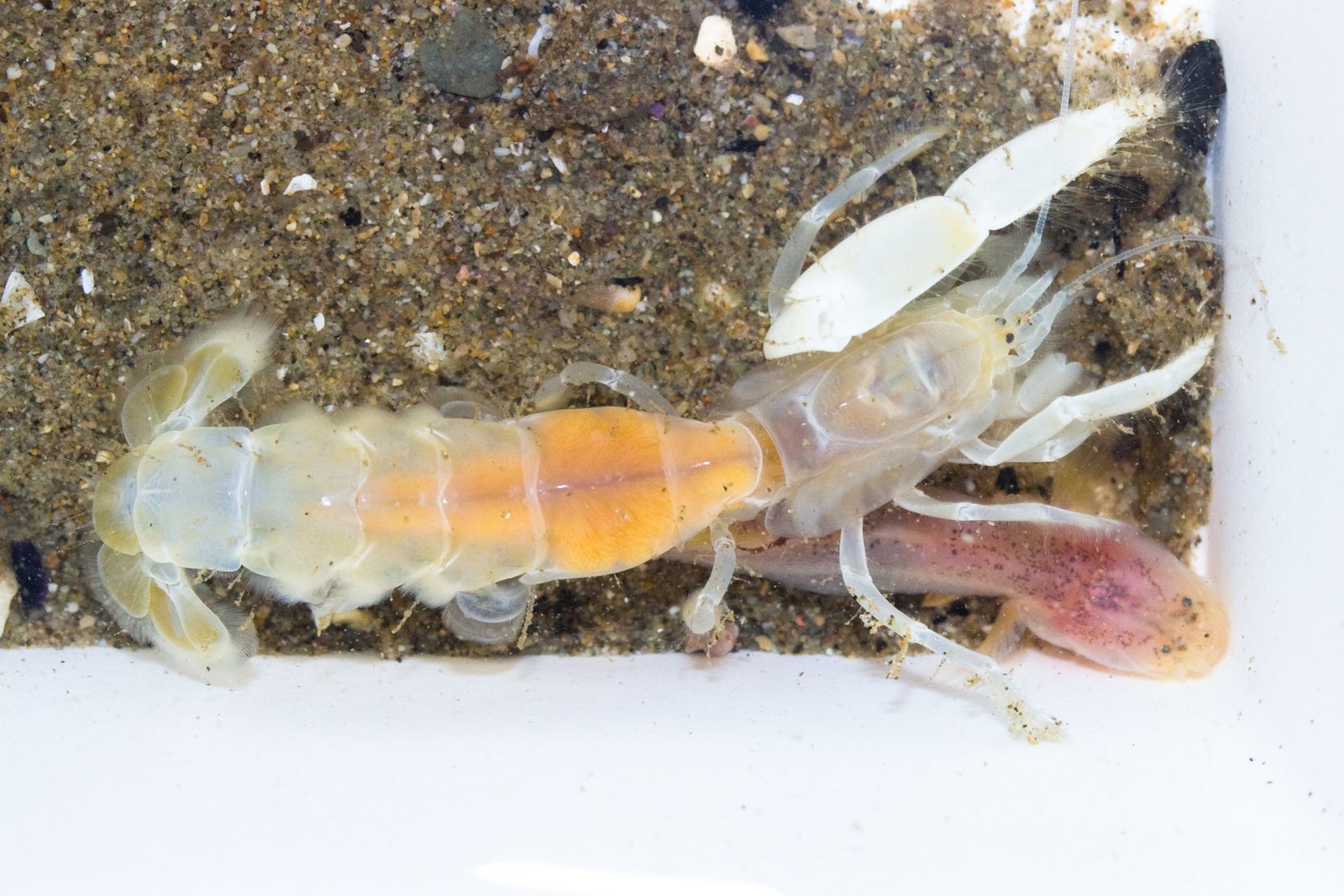
At first glance, ghost shrimp seem to disappear altogether. Their bodies are nearly transparent, with only tiny dots of color marking their organs. These little scavengers are perfect for community tanks, where they help clean up leftover food and algae. Watching a ghost shrimp move is like seeing a tiny, living apparition flicker through the water. Despite their small size, they have bold personalities and will often wave their little claws at much larger tankmates.
Frogspawn Coral: The Living Space Plant

Who says pets have to move around? Frogspawn coral is a living animal colony that looks like something grown in a Martian garden. With bulbous, waving tentacles that sway with the current, this coral adds color and motion to any marine aquarium. Under blue lighting, their neon tips glow, creating a captivating alien landscape. They’re not just decoration—frogspawn coral is alive, feeding on tiny particles and responding to touch.
Giant African Land Snail: The Slow-Motion Giant

Imagine a snail the size of your hand, gliding slowly across the tank glass. Giant African land snails are peaceful, surprisingly intelligent creatures who enjoy exploring and interacting with their environment. They have beautifully spiraled shells and soft, expressive tentacles. Despite their strange appearance, these snails are gentle and easy to care for, making them popular with those who want a pet that’s both unusual and low-maintenance.
Mexican Red-Knee Tarantula: The Velvet-Legged Beauty
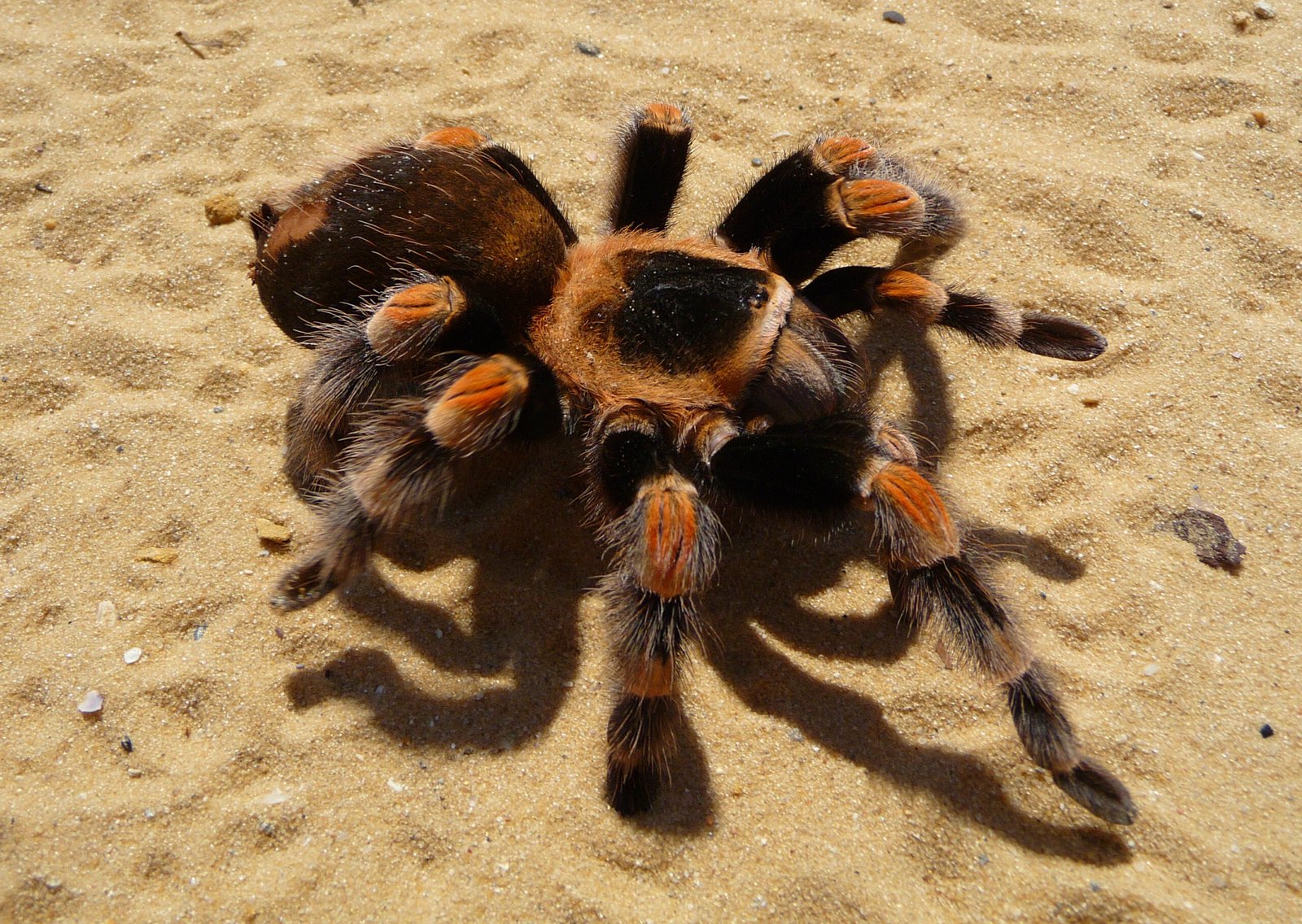
If you can handle a little eight-legged weirdness, the Mexican red-knee tarantula is a showstopper. With bold, orange-striped legs and a velvety black body, these spiders look equal parts menacing and magnificent. They’re surprisingly docile and can live for decades in captivity. Watching a tarantula slowly build its web or gently groom itself is a reminder that even the creepiest creatures have their own strange charm.
White’s Tree Frog: The Chunky Cloud
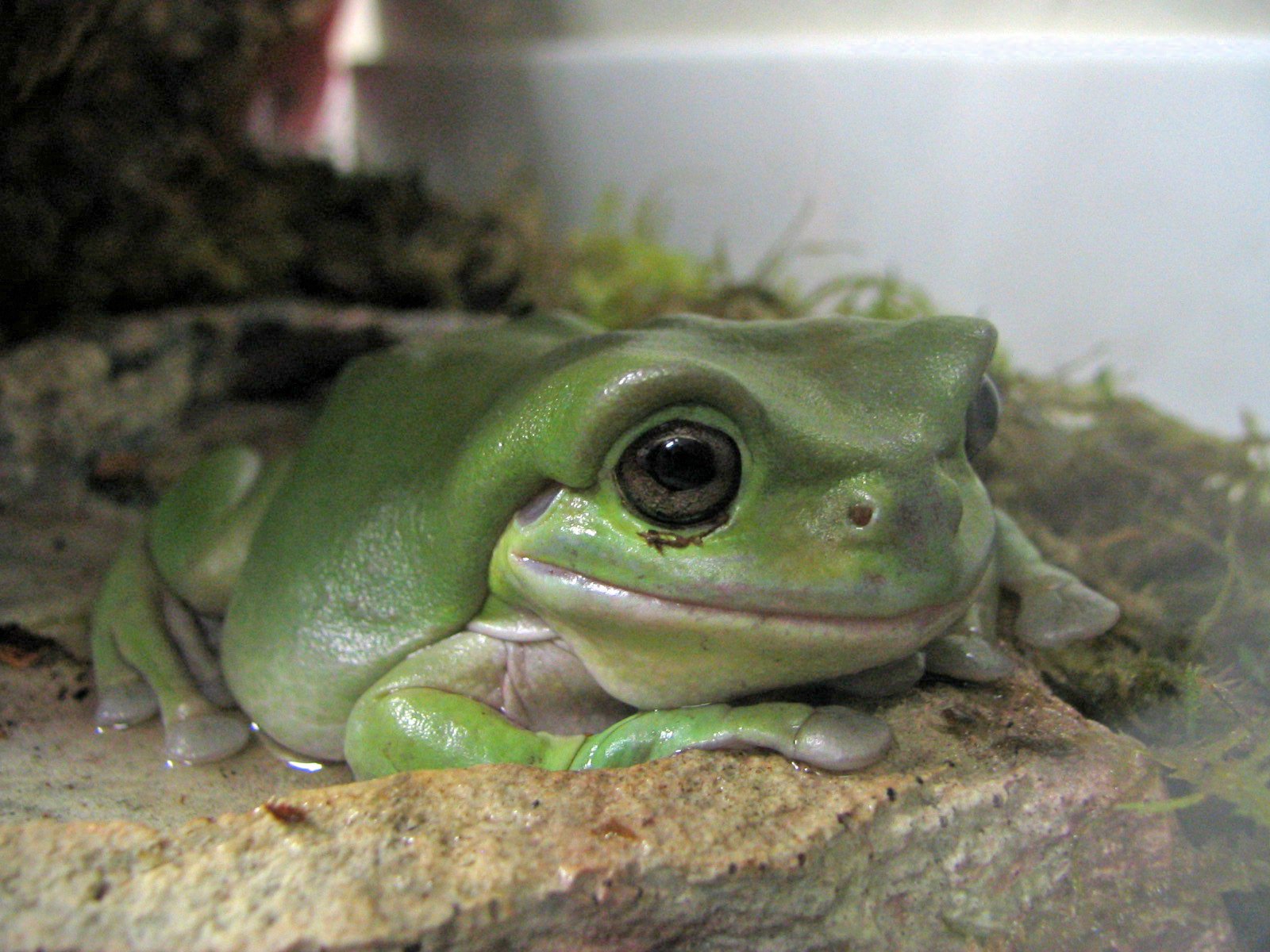
White’s tree frogs are the marshmallows of the amphibian world—plump, soft, and often sporting a goofy grin. Their pale blue-green skin gives them an almost artificial look, like someone sculpted them from clay. These frogs are hardy, easy to keep, and known for their calm, almost lazy personalities. Sometimes they’ll perch for hours in the same spot, looking out at you with sleepy, wise eyes.
Dragon Goby: The Mud Monster

Dragon gobies look like they crawled from the pages of a fantasy novel. Long and eel-like, their heads are adorned with spiky ridges and their mouths sport a perplexed scowl. Despite their fierce look, these fish are gentle giants, sifting through sand for food. Their shimmering, iridescent scales can flash blue or purple under the right light. With their slow, undulating movement, dragon gobies bring a prehistoric vibe to any freshwater tank.
Ornate Horned Frog: The Pac-Man Pet
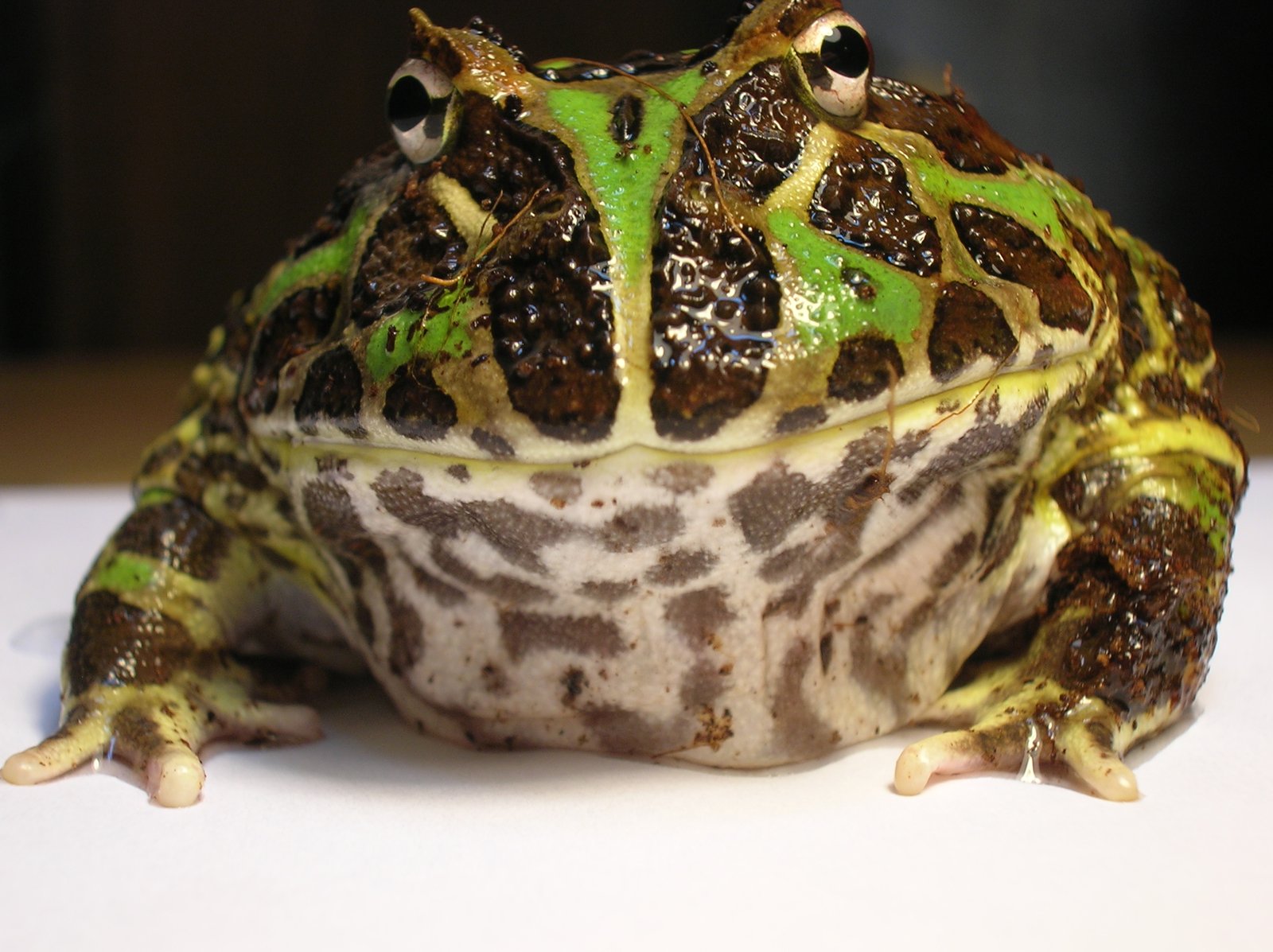
Also known as the Pac-Man frog, this chubby amphibian has a huge mouth and a grumpy, flattened face. Its bright green and yellow coloring looks almost painted on. These frogs are ambush predators, waiting patiently for prey to wander by before snapping it up in a blink. Watching an ornate horned frog eat is both hilarious and shocking—it really does gobble like a video game character!
Sea Apple: The Underwater Balloon
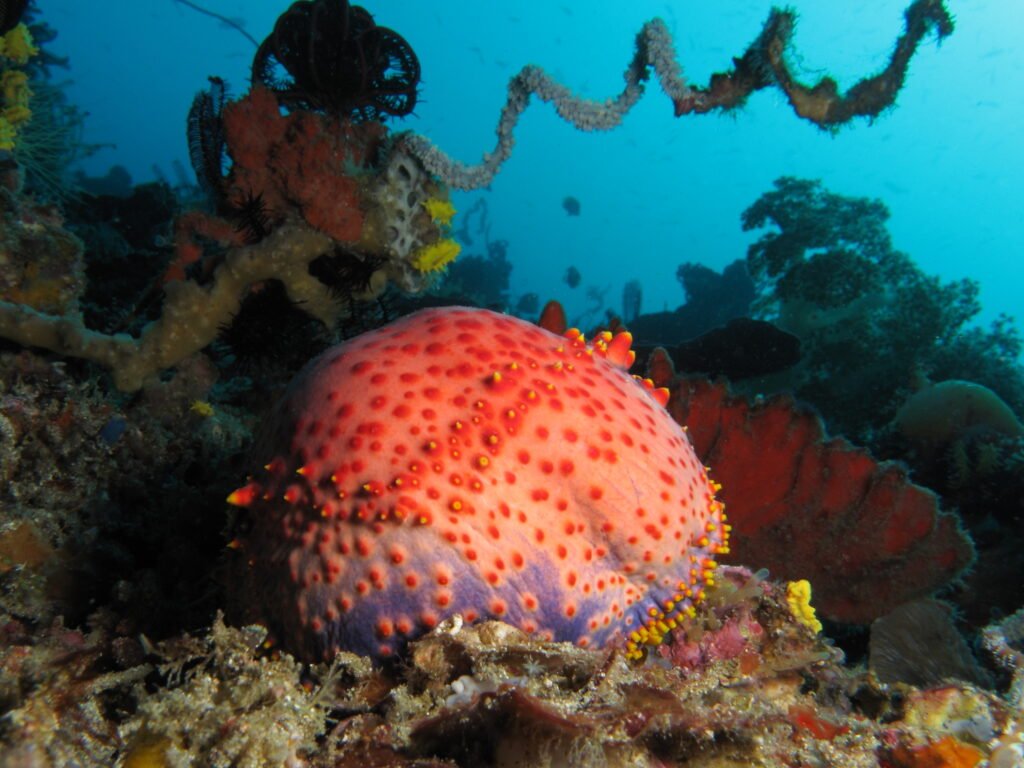
Sea apples are a kind of sea cucumber with a look that defies explanation—part balloon, part flower, part alien. Their bodies are round, vividly colored, and decorated with feathery tentacles that wave in the current, collecting food particles. They are sensitive creatures that need pristine water conditions, but their beauty and strangeness make them unforgettable tank inhabitants. It’s like having a living, breathing art installation in your home.
Starfish: The Living Geometry

Starfish, or sea stars, bring mathematical perfection and otherworldly grace to the aquarium. Their symmetrical arms and textured surfaces look like something designed by an abstract artist. Some species glow under black light, while others come in wild patterns and colors. Starfish slowly glide across tank surfaces, cleaning as they go, and their gentle movements are mesmerizing to watch, like time slowed down.
Elephant Nose Fish: The Long-Nosed Oddball
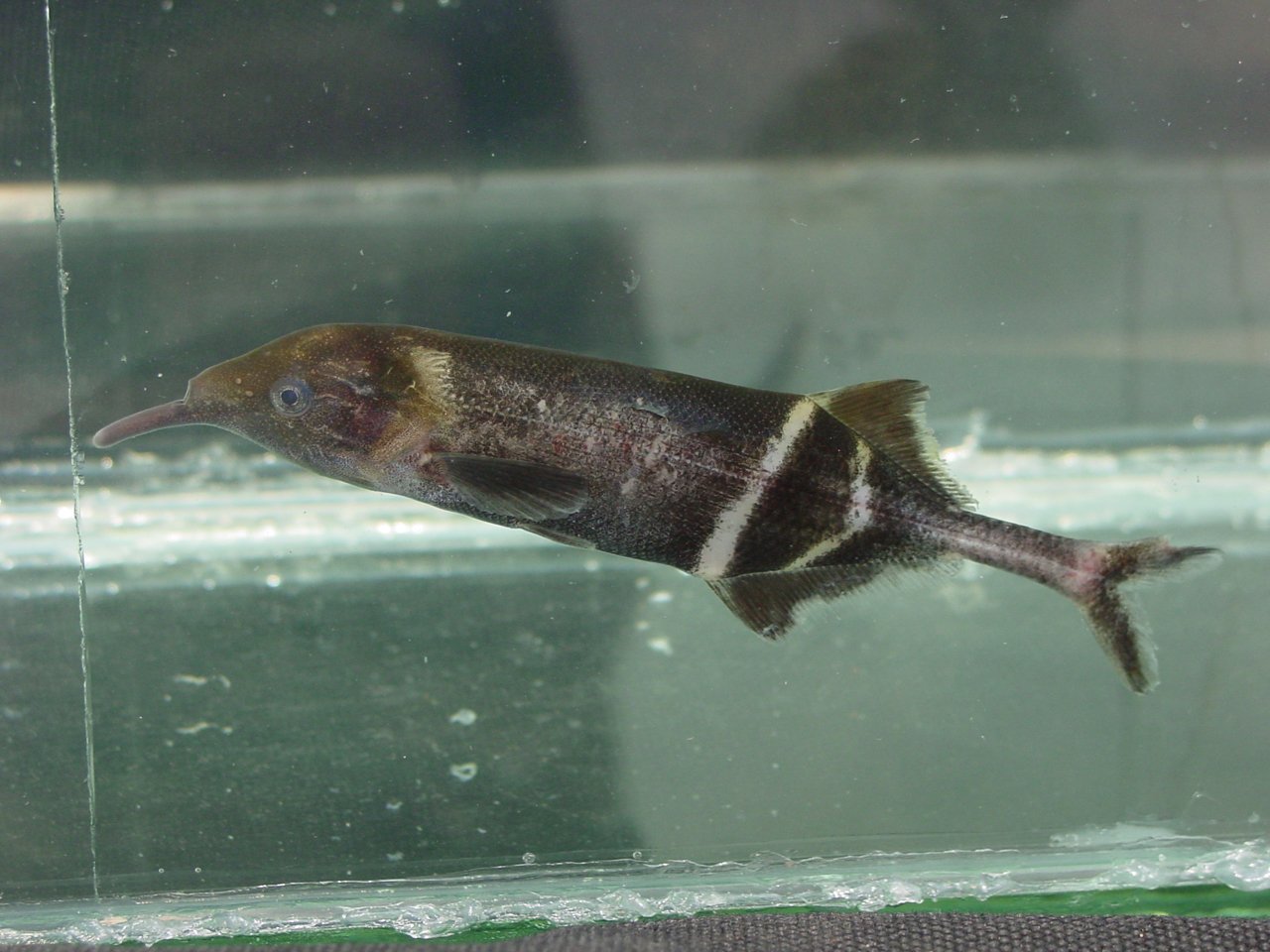
With a trunk-like extension on its face, the elephant nose fish is a true oddity. This freshwater fish uses its elongated “nose” to sense electrical signals in the water, helping it navigate and hunt in murky environments. Their unique look and shy behavior make them a favorite among enthusiasts who appreciate the weird and wonderful. The elephant nose is best kept with peaceful tankmates, as it prefers a calm, dimly lit environment.
Antlered Crab: The Spiky Sculptor

Antlered crabs look as if they’re wearing a crown of branching horns. Their armor is covered in jagged projections that help them blend perfectly into rocky reefs. These crabs are scavengers, constantly searching for food while displaying their dramatic, prehistoric armor. They’re a living conversation piece and a testament to the creative power of evolution.
Fire-Bellied Newt: The Tiny Dragon
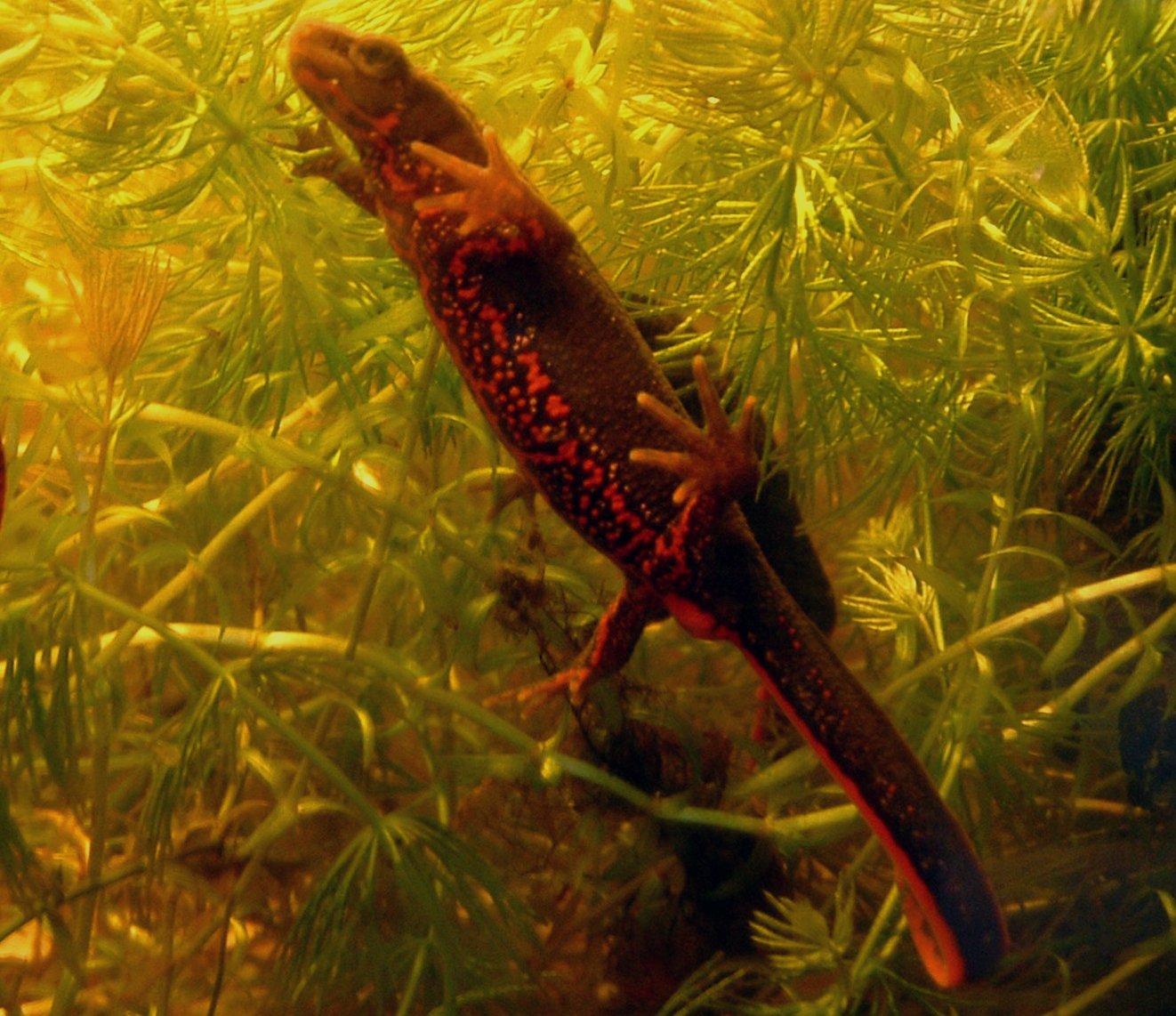
Looking for a pet with a pop of color? Fire-bellied newts have dark backs and flaming orange bellies that signal “don’t eat me!” in the wild. Their smooth, slippery bodies and expressive eyes give them an almost cartoonish appeal. These amphibians are active swimmers and climbers, making them endlessly entertaining to watch. Their striking appearance and playful antics make them a perennial favorite for those wanting a taste of the exotic.
Hydra: The Immortal Micro-Beast
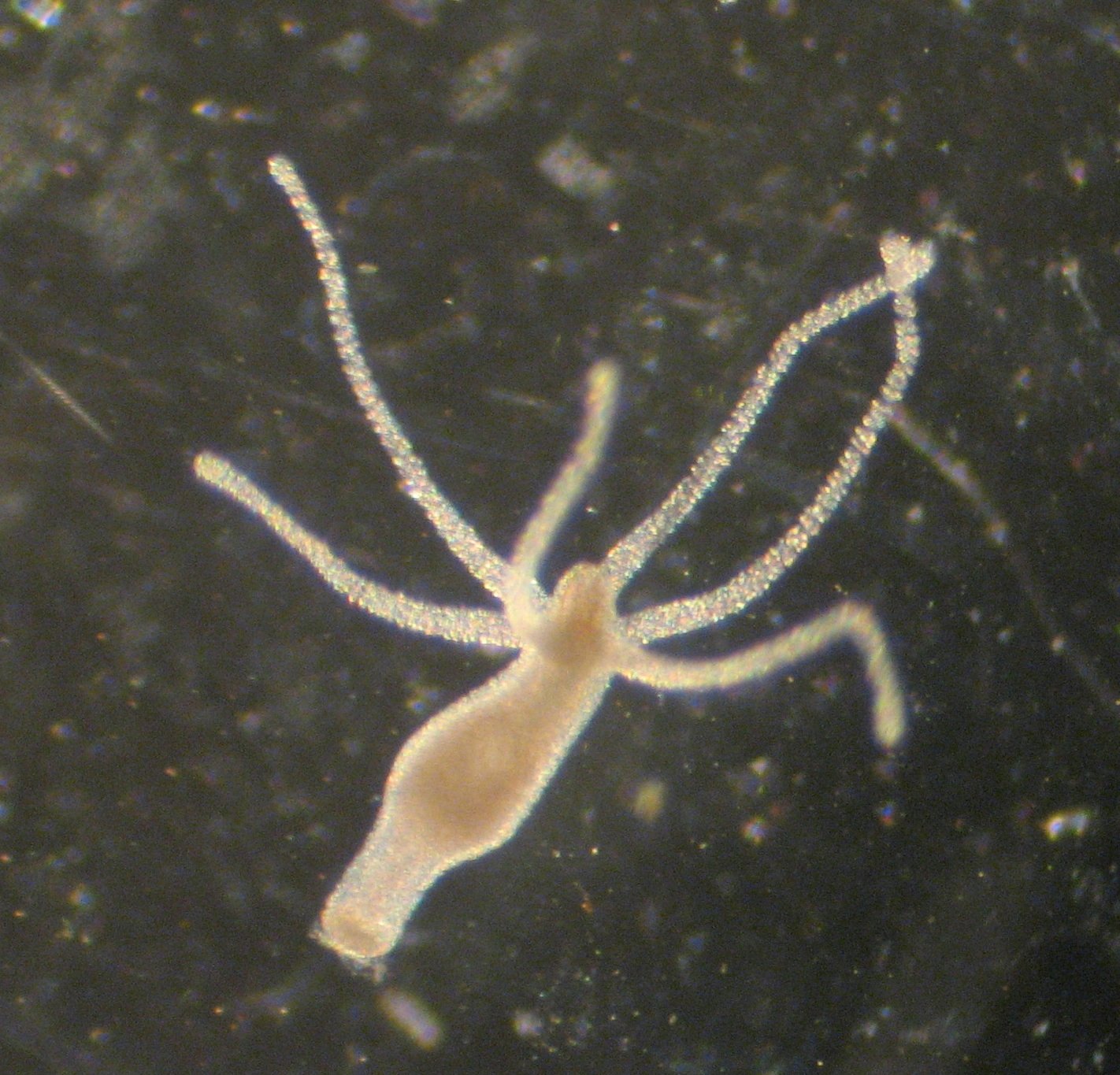
Hydras are minuscule, freshwater polyps that look like tiny, tentacled aliens. They’re famous in the scientific world for their ability to regenerate endlessly—some believe they’re biologically immortal. In the tank, hydras attach to surfaces and wave their tentacles, waiting to snatch up tiny prey. Their simple, elegant form is mesmerizing under a microscope, offering a glimpse into life’s most basic and mysterious structures.




